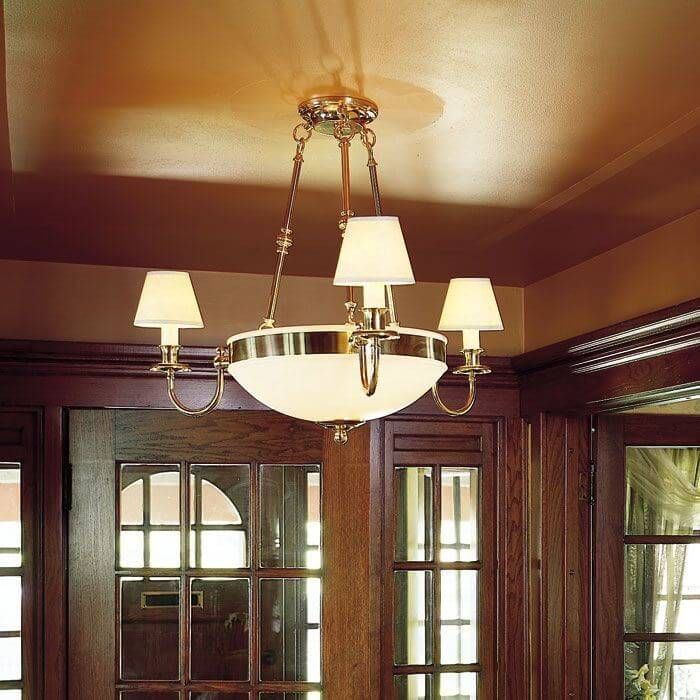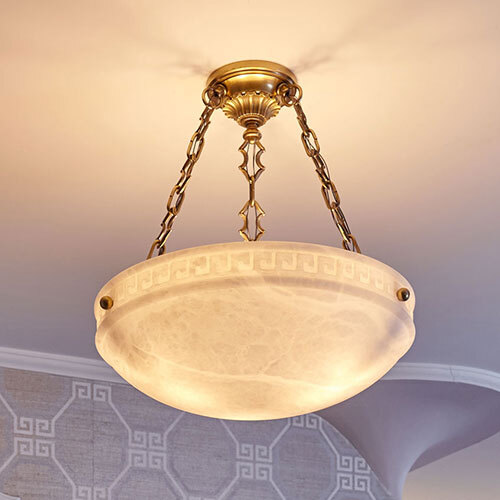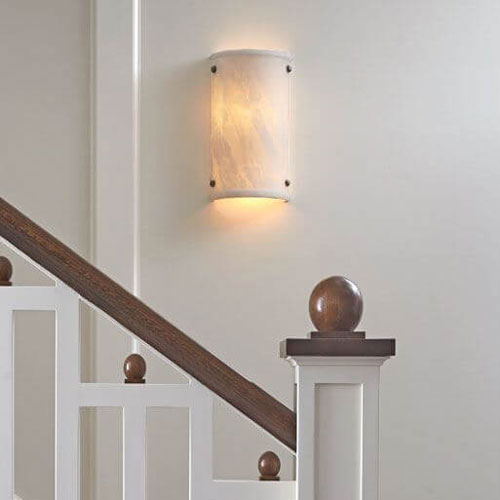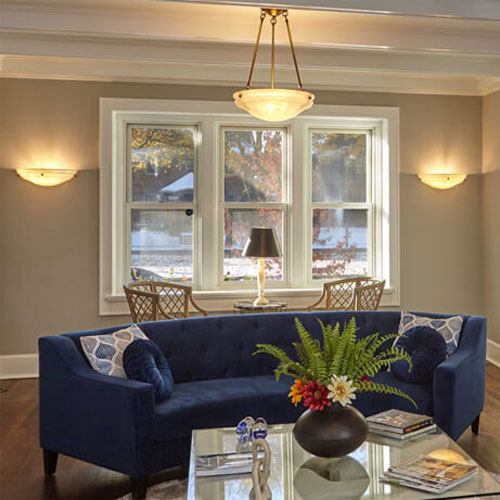Alabaster Lighting
The translucency of alabaster diffuses light softly and evenly, which makes it a marvelous material for light fixtures. Because it is a natural stone, our authentic alabaster has many unique qualities and natural characteristics including a variation of opacity and veining. We have a diverse selection of shapes and sizes for our genuine alabaster wall sconces, alabaster pendant lighting, and alabaster chandeliers.
 Handcrafted in the USA
Handcrafted in the USA





